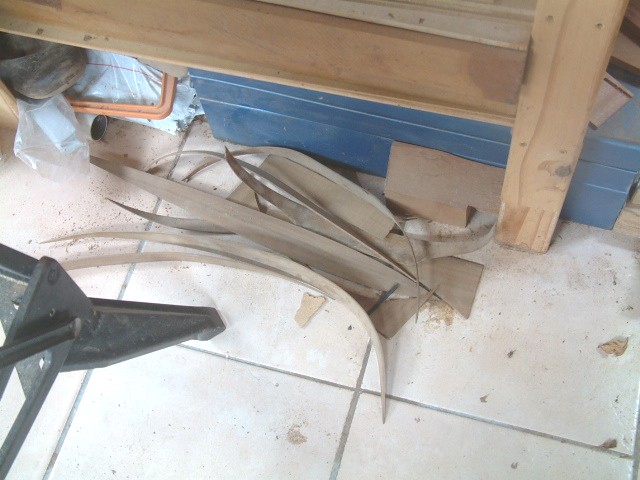This was scary stuff for me as I've never built from anyone else's plans and these plans are VERY detailed. Also it took me totally outside my comfort zone in terms of how a lute works compared to a guitar, but I learned a lot of interesting things and feel I now have a better understanding of where some modern techniques came from. Some of the techniques such as making the bowl and carving the Rose were . . . interesting.
The lute is called Eggbert as basically that’s what the bowl is – draw a line down the middle of the top (half-egg shape) and rotate this though 180 degrees, this gives me the surface of the bowl back. Eggbert is an eight course lute with 595mm scale length. The bowl is made of thirteen African walnut staves separated by bwb purfling together with an African walnut end cap, the neck and pegbox are also African walnut and the pegbox has an ebony end cap. The fretboard is plum, the nut is Old Rio Rosewood and the bridge is English walnut capped with plum. The neck has eight gut frets and four wooden (plum) ones glued onto the top. The bowl was pore filled with egg white and finished with Tru-oil (along with the neck and pegbox). The top was sized with egg white, had a shellac wash coat and then a few coats of Tru-oil.
Tuning from low to high is Dd Ff Gg Cc (Octave pairs) ff aa dd g'. Think of it as a normal six string guitar in standard tuning with the third string down a semitone to F#. Now put two more strings on the bottom - D and Bb. Put octave strings on the bottom four courses and double up the next three courses as unisons. Finally put a capo on the third fret - that's now in eight course lute tuning. The strings are
Pyramid (German made) that Colin got for me with the following gauges (mm):
Fundamental/Octave
1st 0.450
2nd 0.550
3rd 0.675
4th 0.52w
5th 0.66w/ 0.600
6th 0.80w/ 0.675
7th 0.90w/ 0.750
8th 1.02w/ 0.800
I documented Eggbert’s build here on The Luthier Community forum. Getting used to pegs with 1:1 gearing is "interesting" and keeping newish strings in tune even more so - especially as most are in pairs. But I stumbled my way through something and did a recording. My playing is awful having to fumble around finding the right strings - there are a lot, but here it is anyway. It's Track 40 on the Jukebox here on the Sounds page of my website. First I play all the eight strings for the tuning and then go into noodling which I'm calling for now "If it ain't baroque, don't fix it".
Some pictures:
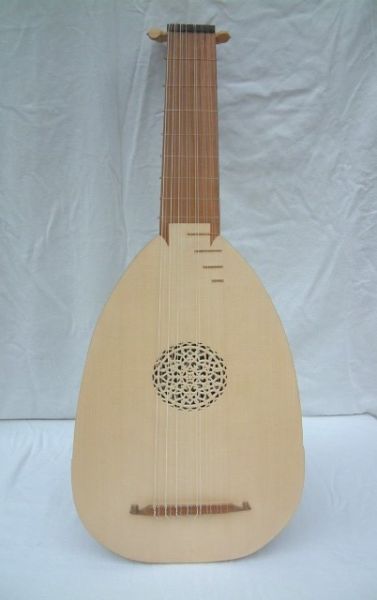
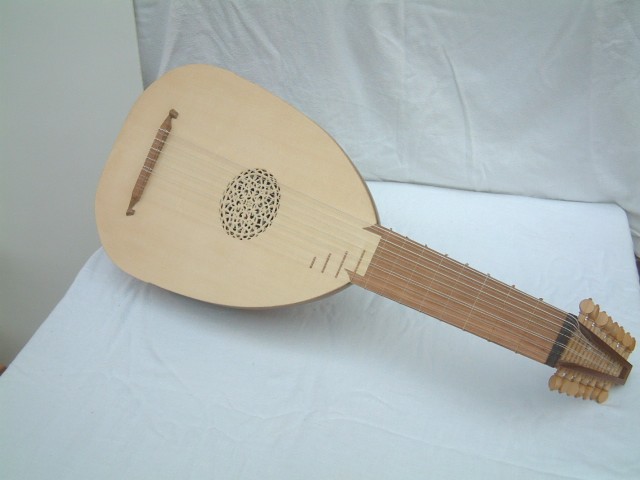

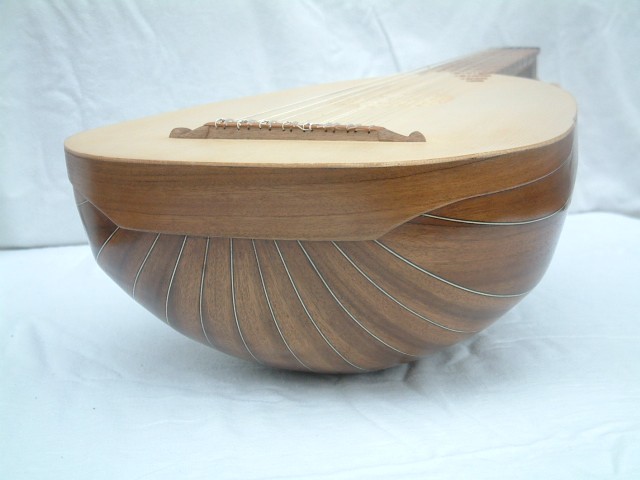

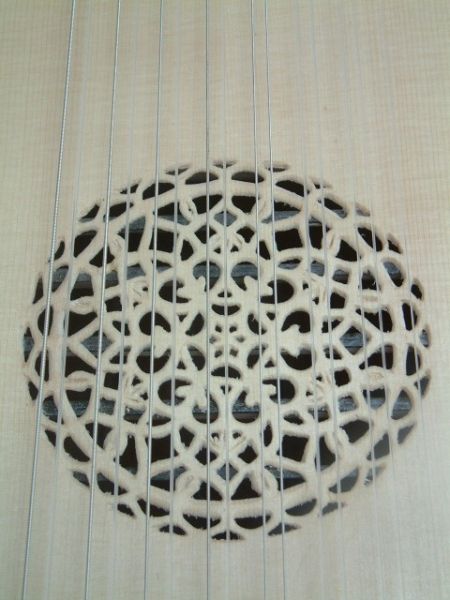
Thanks for looking and listening.
